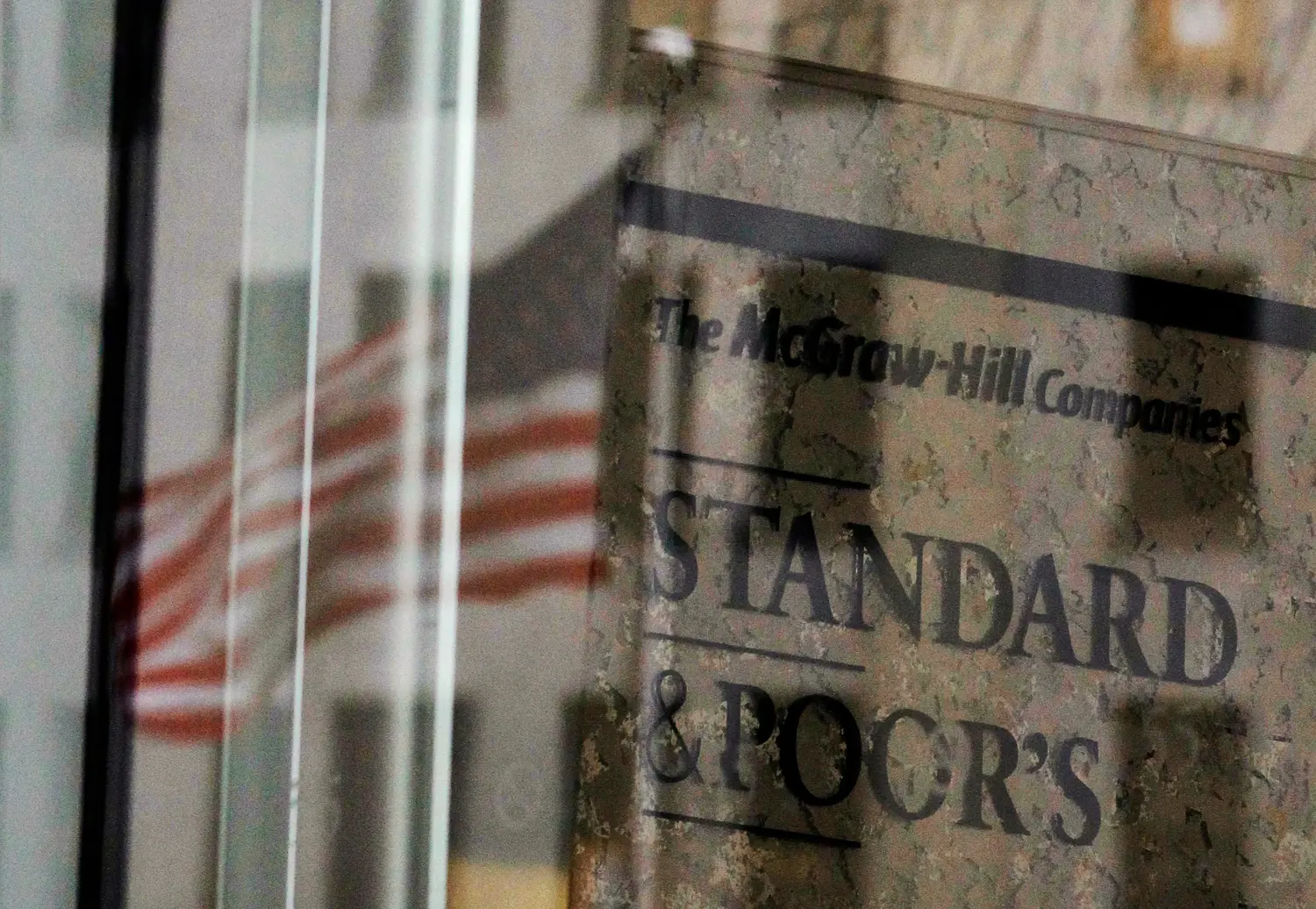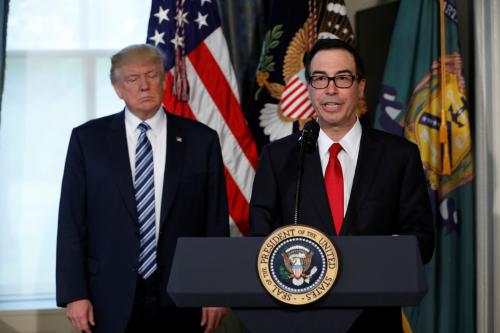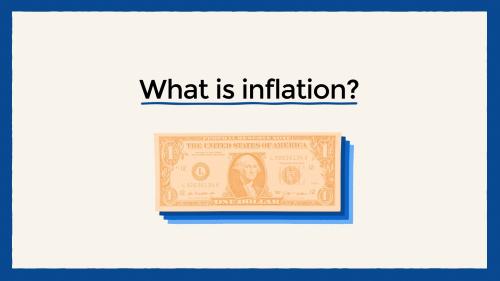In the on-going controversy over how strictly to regulate financial institutions and markets in the wake of the financial crash of 2008, regulation of credit rating agencies (CRAs) has dropped out of sight. Inflated ratings on securities that turned toxic played a major role in the build-up of the financial bubble that eventually burst with such costly consequences. But figuring out how to preserve the usefulness of credit rating agencies while fixing their weaknesses has proved challenging. This paper reviews the CRA problem and reform actions taken so far and discusses what else can be done to avoid future risk to financial stability from the behavior of CRAs.
Why We Have Credit Ratings
Credit ratings are essential to the functioning of modern financial markets. Trustworthy estimates of the relative risks of alternative investments play vital roles in helping markets attract savings into productive investment and matching securities to investors’ risk preferences. Relying on experts with well-developed tools and experience to assess risks of financial securities is much more efficient than millions of investors making their own imperfectly informed guesses about relative risks of investment options.
History
The first CRA was founded in 1909 by John Moody. It gave investors credible credit information on railroad bonds, so they could better understand their risks. This information helped finance the growing railroad industry. With this initial success, the credit rating industry grew to include more CRAs.1
The CRAs originally adopted a subscriber-pays business model: CRAs were paid by investors to rate securities they were interested in purchasing. However, during the 1970s, CRAs switched to an issuer-pay model: the issuers paid for rating the securities they wanted to market.2 This change was influenced by the advent of copying machines, which made it easy to copy a credit rating and share it with others. This free riding hurt revenues of CRAs, so they had to think of an alternative. Fixing the problem by having issuers pay for the credit ratings and making them public created a built-in conflict of interest. The CRAs now had incentive to inflate ratings to please issuers, since issuers were free to shop for a more accommodating CRA.
Credit ratings were used in regulation as early as 1936, but became a fixture for financial regulation in 1975 when the Securities and Exchange Commission (SEC) began designating certain CRAs as Nationally Recognized Statistical Rating Organizations (NRSROs).3 NRSRO ratings could be used to satisfy certain regulatory requirements, like how much capital to hold against certain assets.
Financial Crisis
The explosion of highly leveraged purchases of complex asset-backed securities in the 2000s elevated the visibility of credit ratings and made CRAs important contributors to the financial crisis. Their overoptimistic ratings of structured mortgage products helped inflate the housing bubble.4 Inflated ratings helped channel capital into the riskier parts of the mortgage sector and helped create the large mortgage debt overhang that has slowed economic growth post-crisis. These overoptimistic ratings also allowed financial institutions to take on more risk than regulators intended by investing in high yielding AAA and investment grade structured mortgage products. This excess risk taking precipitated a financial crisis when these assets were down-graded and went into default.
There were two main incentives for CRAs’ to inflate ratings. First, issuers want higher ratings for their products, so they look safer and can be sold at a higher price. Since issuers pick and pay the CRAs that rate their securities, they have great influence on a CRA’s market share and profit margins. Issuers can threaten to take their business to a different CRA if they don’t get the ratings they want. This threat was especially potent in the structured product markets where volume and profit margins were high and a small number of broker-dealers accounted for almost all of the products being rated. Losing a single client would significantly hurt a CRA’s profits.
Second, many investors also wanted inflated ratings due to regulatory requirements and investment mandates. Higher rated securities allowed investors like banks and insurance companies to hold less capital against these securities. This in turn allowed them to take greater risk. Additionally, higher rated securities meant pension funds could take more risk than their mandates intended by investing in higher yielding securities. This made their performance look superior compared to other funds, until the crisis hit.
With the incentives for ratings inflation in place, the CRA models seemed to fail for several specific reasons. First, faced with a deluge of securities to be rated and eager to control their costs, despite record profits, the CRAs skimped on staffing, pay, due diligence, internal controls, and updating their models, further reducing the models’ quality and accuracy.5 Second, many CRA models were gamed and reverse engineered by issuers through tinkering with a security or hiring former CRA analysts to optimize their products to the models.6 Third, the models used inadequate data and made flawed assumptions.7 There was little or no data used from a period of declining housing prices, the scenario that actually occurred. The CRAs also made inaccurate assumptions about the correlation between defaults in different regions, which turned out to be higher than expected and failed to account for relevant information, such as FBI reports on increased mortgage fraud.
These problems affected complex structured products, but were not an issue for more conventional products like corporate bonds.8 There were a great many issuers of conventional products, so they had limited market power compared to the small number of issuers of structured products, who had considerable market power in the ratings market. It was also harder to spot inflated ratings in structured products that require more complex models to value.
What Dodd-Frank Requires
The Dodd-Frank Act (2010) found credit ratings to be systemically important to the financial system.9 Its reforms had four main pillars.
First, the Dodd-Frank Act requires the SEC and GAO to study the NRSROs’ issuer-pays model and alternatives to it, and required the SEC to recommend a business model for the NRSROs.10 If no business model were recommended, it required the SEC to create a board that randomly assigns credit rating assignments to the NRSROs—an idea originally embodied in the Franken-Wicker Amendment. The SEC and GAO conducted their studies of different models, highlighting some of their strengths and weaknesses. Additionally, the SEC held a roundtable to discuss different models’ strengths and weaknesses. However, the SEC took no further action since 2013 and has neither endorsed a business model for the NRSROs nor implemented the random assignment model.
Second, the Dodd-Frank Act reduces the official role of NRSROs by requiring regulators to remove and replace the use of credit ratings in regulations that set capital requirements and restrict asset holdings for financial institutions.11 Regulators responded by replacing credit ratings with three alternative approaches: definitions, regulatory models, and third-party classifications.12 The definitions approach require financial institutions to justify their holdings to regulators by proving they satisfy certain definitions, like “An issuer has an adequate capacity to meet financial commitments if the risk of default by the obligor is low and the full and timely repayment of principal and interest is expected.”13 The regulatory model approach requires financial institutions to use a formula when setting risk-weights for structured products. The third party classifications approach requires financial institutions to use designated non-NRSRO third parties when setting certain capital requirements.
Third, the Dodd-Frank Act increased the legal liability of credit rating agencies.14 It requires the SEC to create a rule making CRAs legally liable for their ratings in a manner similar to an “accounting firm or a security analyst”. It further increased CRA liability by removing a legal exemption their ratings had on financial statements, but congress later repealed this provision.15
Fourth, the Dodd-Frank Act gives the SEC more power to regulate the NRSROs.16 Congress required the SEC to create rules for internal controls, conflicts of interest for credit analysts, standards for credit analysts, transparency, internal conflict of interest, and rating performance statistics among other things. The SEC has finalized these rules and is incorporating them in their annual examination of the NRSROs.
What Still Needs to be Done
In the six years since enactment of Dodd-Frank, regulators have not followed through on many of these reforms. The Department of Labor (DOL) has not removed credit ratings from its regulations. The DOL has proposed a rule similar to other regulatory agencies for replacing credit ratings with definitions, but it has yet to finalize this rule.
The SEC has not proposed legal liability rules for CRAs. If such a rule were finalized the CRAs would likely challenge it in court on the grounds that their ratings are opinions protected by the First Amendment.
In the six years since enactment of Dodd-Frank, regulators have not followed through on many of these reforms.
Finally, the SEC has neither endorsed a business model for the NRSROs nor implemented a random assignment procedure. The challenging nature of choosing a business model for the NRSROs may explain some of this delay. The issuer-pays model has conflicts of interest baked into it, but other leading candidates for replacing it also have some downsides as the SEC and GAO reports point out. However, the issue of rating agency reform should not just be ignored until another securities bubble refocuses attention on the CRAs. The SEC should endorse a business model, implement a random assignment procedure per the Franken-Wicker amendment, or at least explain why it has not done either and what it intends to do going forward.
We believe random assignment for structured products (and only structured products) has the most appeal as a way of eliminating conflicts of interest. This will require setting up an entity to evaluate NRSROs’ capabilities valuing various types of structured products and creating a formula to randomly assign newly issued products to CRAs for rating. This entity will make judgements on the capabilities of different NRSROs, their accuracy, and how much to compensate them for their services.
With random assignment, issuers will not be able to select the laxest rating agency for credit ratings. Investors will have to use NRSRO ratings selected for them independently. And NRSROs will be able to better compete on accuracy rather than laxity. There will be challenges evaluating CRA capabilities and accuracy for different products and determining a proper compensation, but these challenged are manageable and worth the cost relative to the alternatives.
Future Challenges
Regulators should finish the Dodd-Frank agenda for the CRAs. They should also recognize that the evolution of financial markets will continue and the functioning of CRAs should command continuous attention.
The alternatives used for credit ratings in financial regulation need to be better understood and studied. Removing credit ratings from regulation for non-structured products and replacing them with the definition approach appears to us both desirable and feasible. Regulators already evaluate products like mortgages and credit card debt on a bank’s book, so doing the same for vanilla bonds should not be difficult. However, we are skeptical of regulators’ ability to do this for complex structured products, because of the challenges in attracting the proper staffing and expertise to evaluate these opaque products. Therefore, we recommend returning to the use of credit ratings for structured products, but if and only if random assignment is implemented.
Furthermore, the market for credit ratings and should be better studied with a view to promote more competition. New regulations of NRSROs should be reviewed with the objective of reducing regulatory costs and barriers to entry.
Additionally, in its annual examination of the NRSROs the SEC found many problems at the various NRSROs but stated: “The Commission has not determined whether any finding discussed in this Report constitutes a ‘material regulatory deficiency,’ but may do so in the future.”17 This, or a similar statement, was made for every exam since 2011, when the exams began. The SEC should eventually determine whether its findings are material deficiencies and work on remedies to address them.
Conclusion
CRAs play a valuable role in financial markets by analyzing credit for many investors, but their inaccurate ratings of structured mortgage products in the lead up to the financial crisis helped fuel an unsustainable boom in mortgage lending and allowed systemically important financial institutions to take on excessive risk. The failure of their ratings appears to be caused by incentive problems and problems with their models. The Dodd-Frank Act attempts to reform the CRAs through giving regulators the power to change the NRSROs’ business model, removing regulatory reliance on the NRSROs, increasing CRA legal liabilities, and expanding regulations on NRSROs. However, many of these reforms still need to be completed.
Our paper has four recommendations. First, we urge the SEC to get on with the job of finishing its legal liability rule, so CRAs are held more accountable. Second, we strongly recommend that the SEC implement random assignment for structured products to help fix the NRSROs’ perverse incentive structure. Third, if random assignment is implemented, we urge Congress to reconsider the removal of credit ratings from regulations dealing with structured products. Fourth, we recommend that Congress and the SEC further examine competition in the market for credit ratings, with a view to increasing it.
The authors did not receive financial support from any firm or person for this article or from any firm or person with a financial or political interest in this article. They are currently not an officer, director, or board member of any organization with an interest in this article.
-
Footnotes
- Richard Sylla, “A Historical Primer on the Business of Credit Ratings,” prepared for the World Bank conference, The Role of Credit Reporting Systems in the International Economy, March 1-2, 2001
- Richard Sylla, “A Historical Primer on the Business of Credit Ratings,” prepared for the World Bank conference, The Role of Credit Reporting Systems in the International Economy, March 1-2, 2001
- Lawrence White, “Credit Rating Agencies: An Overview,” prepared for the Annual Review of Financial Economics, November 2013
- Adam Ashcraft, Paul Goldsmith-Pinkham, and James Vickery, “MBS Ratings and the Mortgage Credit Boom,” Federal Reserve Bank of New York Staff Report no. 449, May 2010
- U.S. Senate, Committee on Homeland Security and Governmental Affairs, Permanent Subcommittee on Investigations, “Wall Street and the Financial Crisis: Anatomy of a Financial Collapse,” Majority and Minority Staff Report, April 13, 2011
- Gretchen Morgenson and Louise Story, “Rating Agency Data Aided Wall Street in Deals,” New York Times, April 23, 2010
- U.S. Senate, Committee on Homeland Security and Governmental Affairs, Permanent Subcommittee on Investigations, “Wall Street and the Financial Crisis: Anatomy of a Financial Collapse,” Majority and Minority Staff Report, April 13, 2011
- Lawrence White, “Credit Rating Agencies: An Overview,” prepared for the Annual Review of Financial Economics, November 2013
- U.S. Congress, Dodd-Frank Wall Street Reform and Consumer Protection Act, Public Law 111-203 Washington: U.S. Government Printing Office, July 21, 2010, 61.
- U.S. Congress, Dodd-Frank Wall Street Reform and Consumer Protection Act, Public Law 111-203 Washington: U.S. Government Printing Office, July 21, 2010, 61.
- U.S. Congress, Dodd-Frank Wall Street Reform and Consumer Protection Act, Public Law 111-203 Washington: U.S. Government Printing Office, July 21, 2010, 61.
- John Soroushian, “Credit Ratings in Financial Regulation: What’s Changed Since the Dodd-Frank Act?” Office of Financial Research, April 21, 2016
- Final Rule, Federal Register 77, No. 114, June 13, 2012
- U.S. Congress, Dodd-Frank Wall Street Reform and Consumer Protection Act, Public Law 111-203 Washington: U.S. Government Printing Office, July 21, 2010, 61.
- U.S. Congress, Asset-Backed Market Stabilization Act of 2011, Public Law 112–196 Washington: U.S. Government Printing Office, August 12, 2011, 125.
- U.S. Congress, Dodd-Frank Wall Street Reform and Consumer Protection Act, Public Law 111-203 Washington: U.S. Government Printing Office, July 21, 2010, 61.
- Securities and Exchange Commission, 2015 Summary Report of Commission Staff’s Examination of Each Nationally Recognized Statistical Rating Organization











